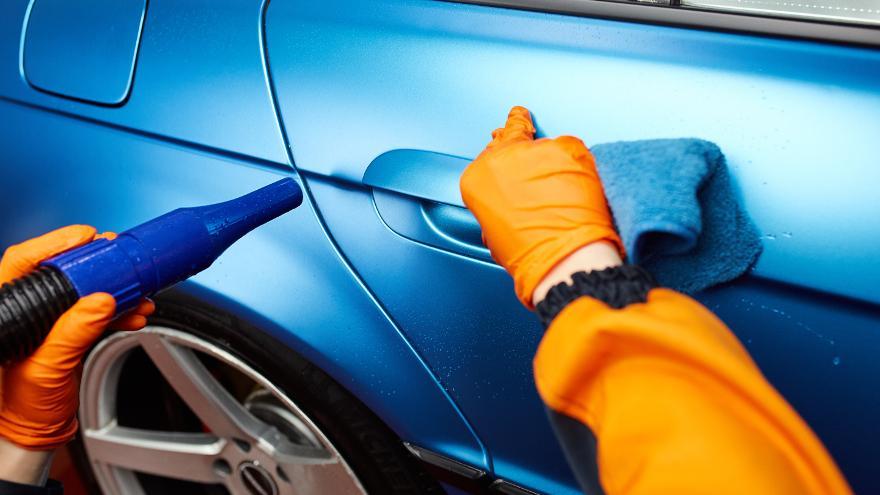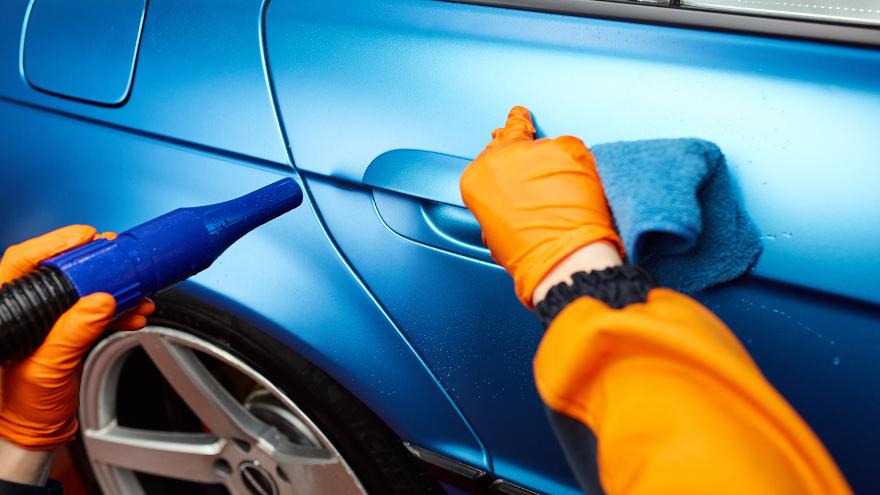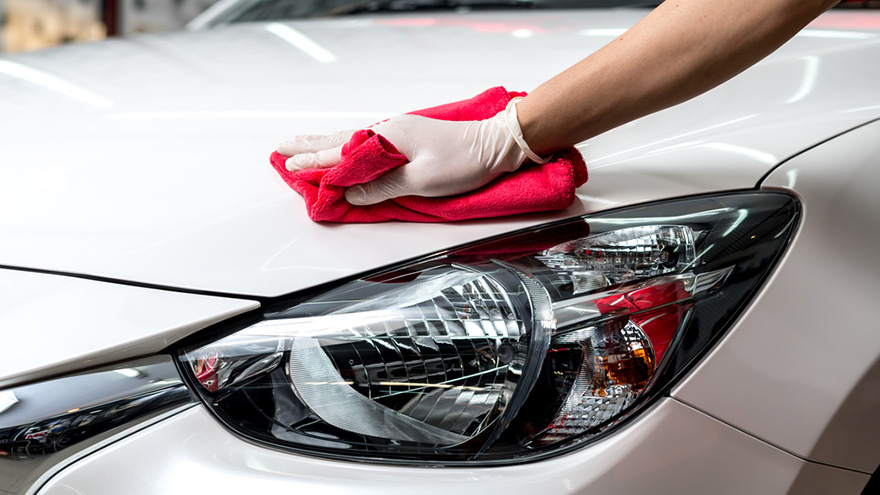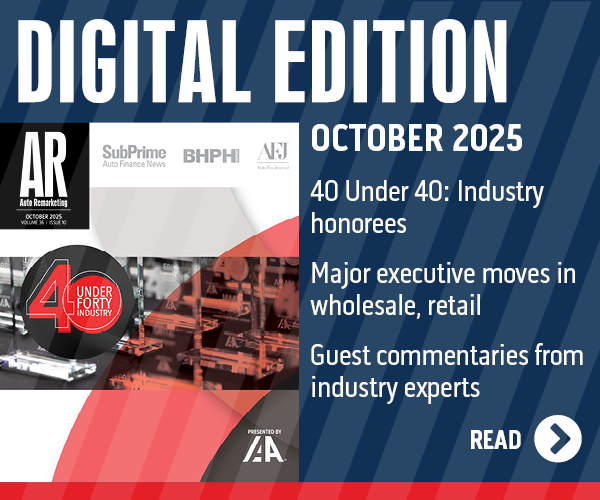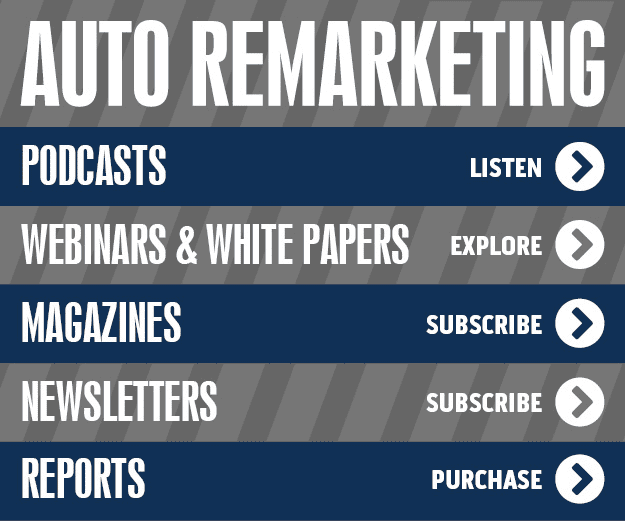Cox Automotive brand vAuto in 2018 acquired iRecon, which says it helps control, manage and maximize the entire reconditioning workflow.
On Thursday, iRecon introduced the all-new iRecon: Vendor. The company says the new mobile application can help vendors manage their workloads — as well as dealer interactions across the reconditioning process — more efficiently and effectively.
iRecon says that the launch of the new mobile application means in-house reconditioning and all U.S. and Canadian vendor partners can easily track and handle work requests. The company says that means dealers can get their inventory turned and in front of customers faster.
Users can access the iRecon tool on-the-go on iOS and Android devices.
The company says that with the mobile application, vendors can manage work requests across partner dealerships. They can also document and complete work requests in real time, according to the company. Vendors can also view and respond to messages associated with work requests, and for completed work items, vendors can build and digitally sign invoices.
In addition, vendors can receive push notifications for new work requests and messages.
vAuto mentioned a 2017 Cox Automotive survey in which dealers ranked reconditioning as one of the top three most vehicle inventory management tasks. Those surveyed dealers also said the reconditioning process can take up significant resources.
vAuto also sourced the 2018 Cox Automotive Service Industry Study showing that dealer service bays are already nearing full capacity for a single shift. That means dealers should consider what they should continue to manage in-house and what must be outsourced. That is especially true in the area of reconditioning work, vAuto said.
The company said that with the iRecon: Vendor product, vendors will be able to better respond to these capacity limitations. The product will help vendors carry the load and be more efficient, according to vAuto.
“For each vehicle we take in, there are multiple phone calls, emails and text messages flying round to check status or get costs approved,” Columbus, Ohio-based Buck-Nut Detailing owner Dan Stark said in a news release.
“iRecon: Vendor cuts all that out and has all the information I need in one place, which not only improves my shop’s productivity but also makes my clients more satisfied with my service,” Stark said.
iRecon founder and senior director of business enablement Mike Boyd said that dealers are fighting to remain profitable, and that means improving the reconditioning process is more important than ever. “Every extra day it takes to get a vehicle front-line ready impacts a dealership’s turn rate and bottom line,” Boyd said. “With iRecon: Vendor, our vendor partners have the access, transparency and controlled workflow they need to minimize delays and meet the challenges facing today’s dealers.”
Your efforts to get cars from reconditioning to sale-ready faster will always hit speed bumps — that is until everyone involved enjoys the freedom to practice proactive accountability for themselves and teammates.
Practicing seamless proactive accountability is critical if you want to transform recon operations to increase inventory turns and hold gross margin.
Where accountability is lacking, you’ll most often find ongoing friction and mistrust among the fixed ops-sales-recon team.
Why accountability?
The word proactive, BusinessDictionary.com notes, is “action and results-oriented behavior, instead of one that waits for things to happen and then tries to adjust (react) to them.”
Personal proactive accountability is so relevant to business performance that Harvard Business Review said the streaming entertainment company Spotify practices it with awesome results.
Spotify organizes its employees via autonomous skill-set “squads,” according to that HBR story. Individuals in these squads know they (and their teams) are held accountable to get their assigned tasks completed within specified parameters.
Dealers don’t stream music, of course, but cars — from acquisition to sale-ready. In a recon environment practicing proactive accountability, not only are techs, detailers and sublets working within clear work steps and task “squads,” they’re also accountable for how they hand-off their completed work to the next squad in the recon process.
Creates gain
Good things come about for a store practicing proactive accountability to improve recon time-to-line (T2L) performance:
- Workflow improves: Fixed ops, recon and used-car department personnel able to work collaboratively with responsibility eliminate speed bumps to more profitable used-car margins. With friction and communication delays reduced or even eliminated, the resulting faster T2L improves inventory turn, reduces holding cost waste, and gets buyer eyeballs on cars sooner.
- Job satisfaction improves: Defined work steps and clearly defined task times clarify job descriptions and performance standards. With accountability to these parameters, friction between advisors, technicians, detailers, parts, and managers lessens, finger-pointing stops, and the work environment becomes more cooperative and safer.
- Volume and margin improve: By increasing workflow and job satisfaction, output improves. Improve your recon cycle by 2.5 days and your store gains one additional inventory turn a year. You can sell more cars while inventorying fewer. Faster recon time gets inventory online or to the sales lot when fresh, when it appeals most to consumers and in general will retail at a higher margin.
Set clear standards
The survey company Gallup recently took the temperature of the general workplace on this accountability point and found that only half of employees knew what management expected from them at work.
“Helping employees to set and achieve goals is a manager's key responsibility, but many managers don't really own this task,” Gallup reported.
“To free employees to take the initiative and inspire high performance, managers need to set clear expectations, hold employees accountable for meeting them and quickly respond when employees need support. But managers also should hold themselves accountable for meeting employees' performance needs,” Gallup said.
When using T2L recon workflow software in the dealership, the automation handles the essential behavior and accountability tasks for you.
Dennis McGinn is the founder and chief executive officer of Rapid Recon.
I am just old enough to remember from reruns a black-and-white TV sitcom, “Car 54, Where Are You?” The show originally ran on NBC from 1961 to 1963. I do recall, somewhat painfully, hearing a similar phrase echoing through our showroom and used-car operation during my more recent days as a former dealership owner and general manager.
We, too, lost cars. Transports unloaded out back on busy Saturdays were often left to sit, sometimes until the following Wednesday. We lost track of cars at sublets. Cars pulled out of line at inspection to await special order parts sometimes sat idle too long. Each delay cost us money.
Your dealership loses, misplaces or forgets vehicles every day as they move around through a multi-step reconditioning process. These neglected assets run up your holding costs — $40 on average per day per car — and kill your time-to-line (T2L) efficiency, which results in diminished inventory turn, gross erosion and loss of precious sales.
That’s a lot of damage resulting from cars that, for many reasons, drop out of line and out of mind while the depreciation clock continues to tick.
You must stop this waste. To succeed here, you’ll need a system for tracking vehicle movement, location and time loss (as holding cost). You’ll want a process that follows every vehicle through every step of your reconditioning, from acquisition until it’s sold. The ideal solution keeps you and your team on top of each vehicle’s situation via mobile and desktop tools that email, text and flag notations that provide real-time location updates and where that vehicle is during any moment of your recon process, whether still on the back lot or sale-ready and moved to the sales lot.
Find more gross
Recon delays caused by misplacing or forgetting cars slow down your T2L recon cycle time (in days) and that costs your dealership the loss of measurable gross you’ll never get back. This is because the speed at which each recon step is completed and the number of times the cycle is repeated is what drives up gross profit exponentially — and each car must be in recon for this to happen:
• It drives up gross with additional trade-in volume.
• It drives up gross in the service and parts departments with more purchases and trades running through the shop.
• It drives up F&I gross with more customers coming through that department.
• It drives up future gross as the dealership’s customer base expands with each new customer, referral and repeat business.
The longer a vehicle remains in the inventory cycle, the higher the holding cost and the lower the total gross profit will be. At some point, these increased costs and lost gross will overtake any potential gross profit.
No more lost cars
Fred Gwynn, who played Fred Munster in the sitcom “The Munsters,” and comedian Joe E. Ross starred in the original “Car 54,” not to be confused with the ’94 remake (for younger readers, the original version is available on Amazon Prime Video). Gywnn and Ross as officers Muldoon and Toody, respectively, were comical, a little clumsy and, by all indications, apt to get lost or forgotten by those back at command central.
That is no way to run a police — or recon — department.
The “Car 54” team used two-way radio communications but, for rapid recon results today, you’ll use mobile devices and desktop computers equipped with T2L workflow tracking and location apps. Now your team, from wherever they are, can instantly know the precise location of your cars, whether on the lot, in detail, at sublet — or on a test drive.
Fast, convenient VIN and QR code scans mean immediate capture and upload of incoming car data into your DMS to start the recon acquisition process. Mobile scan convenience saves your team time, shoe leather, double data entry and the frustration of having to correct errors that inevitably plague manual data entry.
Progressive dealers use recon accountability workflow technology, mobile applications and software products to shorten their inventory cycle times, from acquisition to sale-ready and then to the front line.
Why T2L accountability matters
We know the first 21 to 30 days you own a car is the best opportunity to sell a vehicle and earn the highest gross. After having processed more than five million vehicles through our rapid reconditioning software, however, our data tell us most dealers’ recon practices suffer under a 12- to 21-day recon cycle. These slow cycles mean cars are not sale-ready until much of this premier sales time is consumed.
Where reconditioning T2L software replaces manual recon workflow and tracking methods, most dealers quickly achieve a three- to five-day time to line cycle.
Too good to be true? No, say dealers:
“We sell more than 700 used cars a month. Tracking these vehicles through the reconditioning process has always been a task that is very difficult to deal with,” said Jared Ricart, president of the Ricart Used Car Factory, part of Ricart Automotive in Columbus, Ohio. “With the software that Rapid Recon has provided for us, we can find out where cars are at and at which step of the process. Discovering how fast they're getting to the front line has been terrific because, in today's age of used car sales, it's about speed to the front line.”
When you want to run a highly productive and intelligent vehicle-reconditioning department, you can’t have lost cars, delayed cars or out-of-production cars.
Camacho Auto Sales is an independent dealership with three used car operations serving the Palmdale and Lancaster, Calif., markets outside of Los Angeles. Camacho reconditions 220 vehicles a month to keep its lots filled with fresh inventory that sells faster.
Camacho’s used car superstore at the Palmdale Auto Mall provides the recon function for the operation.
Vehicles sent out to sublets for some phases of that work often were forgotten or otherwise delayed. That lost time cost Camacho Auto Sales considerable financial loss.
“Things were a mess,” said owner/operator Gus Camacho. “We are talking here about thousands and thousands of dollars. Delay getting cars ready to be sold increases floorplan expense, ties up money in products not available for sale and contributes to vehicle depreciation.”
The core of this problem is a lack of visibility. Camacho said he rarely knew how long cars were at sublets or otherwise delayed unless he checked when repair orders on those vehicles were opened. This provided the information sought, but too late to enable him to address the real problem.
“With rapid reconditioning software, however, we know exactly where our cars are — and how long a sublet is taking to get them back to us. If that time is unacceptable, we now have the data to discuss that problem with the sublet in objective ways,” Camacho said.
A busy recon operation has too many individual pieces in motion at one time to track those assets accurately using Google Doc or spreadsheet systems. When you can’t track accurately, cars get lost, misplaced or forgotten for some expensive period of time. Each “lost car” incident erodes recon speed or T2L. Remove delays by using recon tracking accountability software to know where every car you own is — whether just off the transport or coming out of the photo booth.
Trackability and accountability throughout your recon operation will help you reduce your T2L by keeping the line moving forward. Faster T2L improves inventory turn — an added turn for every 2.5 days reduced in your T2L — shaves your holding costs and boost gross. You must know where your cars are at all times.
Steve Lewis, a former dealership GM and owner, is VP of sales for Rapid Recon. For more information, visit www.rapidrecon.com or contact him at [email protected].

